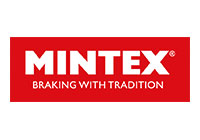Disc brake
Disc brakes have become established in modern cars: they are the most widespread brake system, ahead of drum brakes.
Function
Disc brakes consist of a brake disc, which is fixed to the wheel hub, and a brake carrier to which the brake calliper is mounted, depending on the design in question. The brake pads are located in the brake calliper. The brake calliper encircles the brake disc.
Just like a drum brake, a disc brake converts the car’s kinetic energy into heat through friction. Here, the brake pads are pressed onto the friction surface of the brake disc by a piston in the brake calliper. The friction energy generated in this manner brakes the disc and thus also the wheel, to which the disc is fixed and bolted.
When the brake is released, the piston is retracted by an elastic sealing ring, which behaves like a spring.
Variants:
In general, a differentiation is made between three variants of the disc brake:
- Fixed-calliper disc brake: This contains pistons on both sides of the brake disc
- Sliding-calliper disc brake: This contains pistons on only one side of the brake calliper and has a sliding bearing
- Floating-calliper disc brake: This also contains pistons on only one side of the brake calliper and has a sliding bearing
Advantages of disc brakes:
- Good cooling, high thermal resistance
- Low susceptibility to fluctuations in the friction value of the brake pad
- Smooth application
- Even wear on the brake pad
- Self-adjustment
Safety
The disc brake is one of the most important vehicle systems when it comes to safety. It is relatively low-wear and has a long service life. A specialist workshop should be consulted immediately if deterioration in the braking action of a disc brake becomes noticeable. Disc brakes are only to be repaired by qualified personnel. The manufacturer’s installation instructions must be observed when doing so.
Value retention
Motorists need not concern themselves with the maintenance of disc brakes. Workshops check the level of wear and the action of disc brakes as part of a vehicle inspection. The following aspects must be heeded to ensure optimum braking action and vehicle value retention:
- Only top-quality replacement parts should be used if individual components have to be renewed.
- Replacement parts must be expertly fitted.














